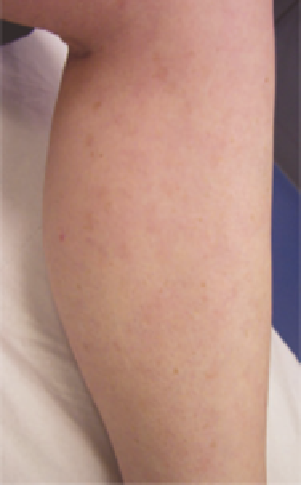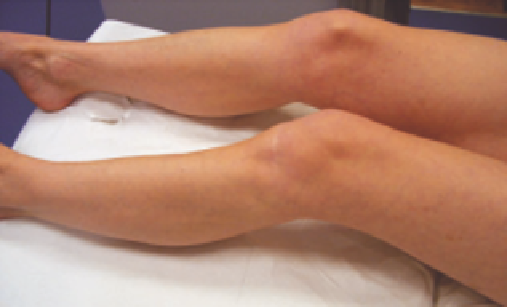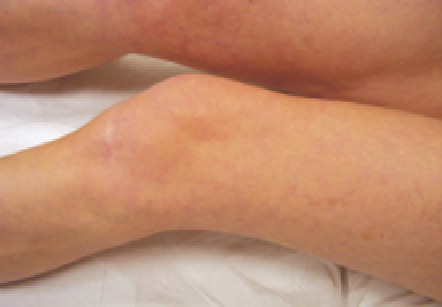Biomedical Engineering Reference
In-Depth Information
(
B
)
(
C
)
(
A
)
Figure 5.15
(
A
) Incorrect use of treatment parameters (fl uence too high for particular skin type) caused epidermal damage with subsequent crusting. (
B
) Two weeks
later: presence of postinfl ammatory hyperpigmentation. (
C
) Eight weeks later: resolution of postinfl ammatory hyperpigmentation.
(
A
)
(
B
)
Figure 5.16
Induction of reticulate erythema on upper leg after a single treatment with an 800-nm diode laser (fl uence 50 J/cm
2
). Note the difference with the lower
leg where no treatment was administered.
in the immediate vicinity of the treatment area. Repetitive, low-
fl uence treatments with hair removal devices have also been
reported to induce hair growth. A further study is ongoing to
assess the mechanisms for this response. Treatment of this side
effect has included continued treatment in some cases.
Light-based hair removal devices are designed for strong
absorption by melanin and deep tissue penetration. These sys-
tems are therefore capable of causing retinal injury, and proper
eye protection must be worn by the patient and operating per-
sonnel. Treatment near or on the surface of an eye is not rec-
ommended. All other body sites can be treated safely.
The “plume” generated by the vaporized hair shafts has a
typical sulfuric smell and in large quantities, can be irritating
to the respiratory tract. A smoke evacuator is recommended.
conclusion
Future Directions
Advancements in Pain Control
A novel technique to reduce LHR-associated pain is pneumatic
skin fl attening (PSF) (58). PSF works by coupling a vacuum
chamber to generate negative pressure and fl atten the skin
against the handpiece treatment window. Based on the gate




















